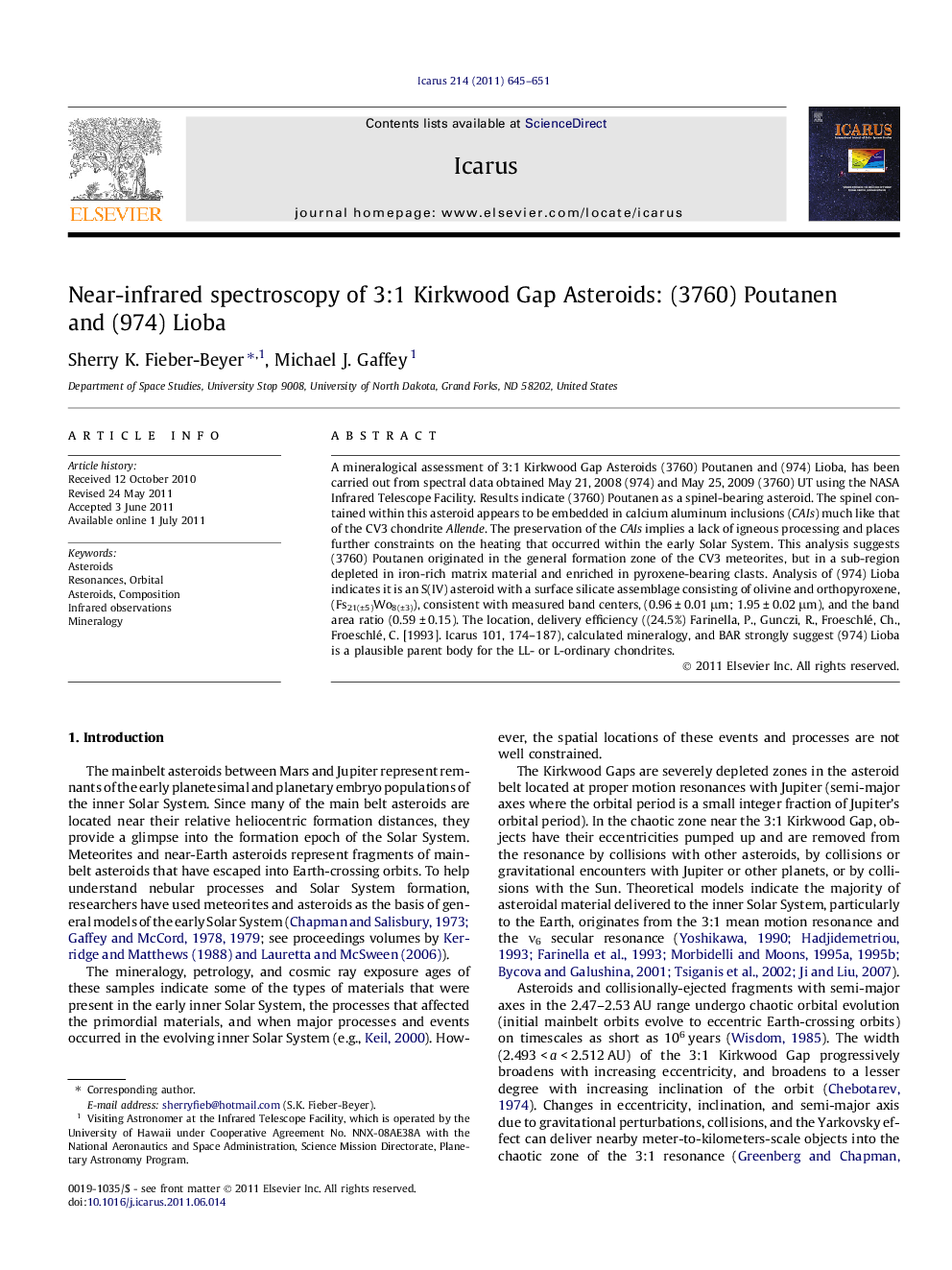| Article ID | Journal | Published Year | Pages | File Type |
|---|---|---|---|---|
| 1774203 | Icarus | 2011 | 7 Pages |
A mineralogical assessment of 3:1 Kirkwood Gap Asteroids (3760) Poutanen and (974) Lioba, has been carried out from spectral data obtained May 21, 2008 (974) and May 25, 2009 (3760) UT using the NASA Infrared Telescope Facility. Results indicate (3760) Poutanen as a spinel-bearing asteroid. The spinel contained within this asteroid appears to be embedded in calcium aluminum inclusions (CAIs) much like that of the CV3 chondrite Allende. The preservation of the CAIs implies a lack of igneous processing and places further constraints on the heating that occurred within the early Solar System. This analysis suggests (3760) Poutanen originated in the general formation zone of the CV3 meteorites, but in a sub-region depleted in iron-rich matrix material and enriched in pyroxene-bearing clasts. Analysis of (974) Lioba indicates it is an S(IV) asteroid with a surface silicate assemblage consisting of olivine and orthopyroxene, (Fs21(±5)Wo8(±3)), consistent with measured band centers, (0.96 ± 0.01 μm; 1.95 ± 0.02 μm), and the band area ratio (0.59 ± 0.15). The location, delivery efficiency ((24.5%) Farinella, P., Gunczi, R., Froeschlé, Ch., Froeschlé, C. [1993]. Icarus 101, 174–187), calculated mineralogy, and BAR strongly suggest (974) Lioba is a plausible parent body for the LL- or L-ordinary chondrites.
► The current analysis identifies 3760 Poutanen as a spinel-bearing asteroid. ► 3760 originated in a sub-region of the formation zone of the CV3 meteorites. ► 974 Lioba is an S(IV) asteroid with a silicate assemblage consisting of opx and ol. ► 974 is a plausible parent body of the LL-type OCs or possibly the L-type OCs.
